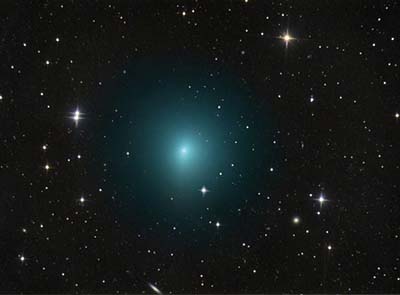Over the weekend (1 April), comet 41P passed closer than it normally does to Earth. It is expected to reach perihelion, or its closest approach to the sun, on 12 April.
Officially named 41P/Tuttle-Giacobini-Kresák to honour its three discoverers, the comet was first recognized as a periodic comet — one that orbits the sun — but astronomers were uncertain how long the comet needed to make the trip. The comet was rediscovered in 1907 by Michael Giacobini but not immediately linked to the object seen in 1858.
Later, the astronomer Andrew Crommelin determined that the two observations had been of the same object and predicted that the comet would return in 1928 and 1934, according to the Cometography entry for the comet. However, the object was not seen then and was considered lost. In 1951, L’ubor Kresák discovered it again and tied it to the earlier observations.
A member of the Jupiter family of comets, 41P makes a trip around the sun every 5,4 years, coming relatively close to Earth on some of those trips. On this approach, the comet will pass our planet at a distance of about 13-million miles (0.14 astronomical units), or about 55 times the distance from Earth to the moon. This weekend was the comet’s closest approach to Earth in more than 50 years and perhaps more than a century.
For scientists, 41P’s visit is an opportunity to fill in details about the comet’s composition, coma and nucleus.
“An important aspect of Jupiter-family comets is that fewer of them have been studied, especially in terms of the composition of ices in their nuclei, compared with comets from the Oort cloud,” says Michael DiSanti of NASA’s Goddard Space Flight Centre in Greenbelt, Maryland.
“Comets are remnants from the early solar system,” says DiSanti. “Each comet that comes into the neighbourhood of Earth gives us a chance to add to our understanding of the events that led to the formation of our own planet.”
Picture: In this image taken March 24, 2017 of comet 41P/Tuttle-Giacobini-Kresák is shown moving through a field of faint galaxies in the bowl of the Big Dipper. On 1 April, the comet passed by Earth at a distance of about 13-million miles (0,14 astronomical units), or 55 times the distance from Earth to the moon – much closer approach than usual for this Jupiter-family comet.
Credits: image copyright Chris Schur

